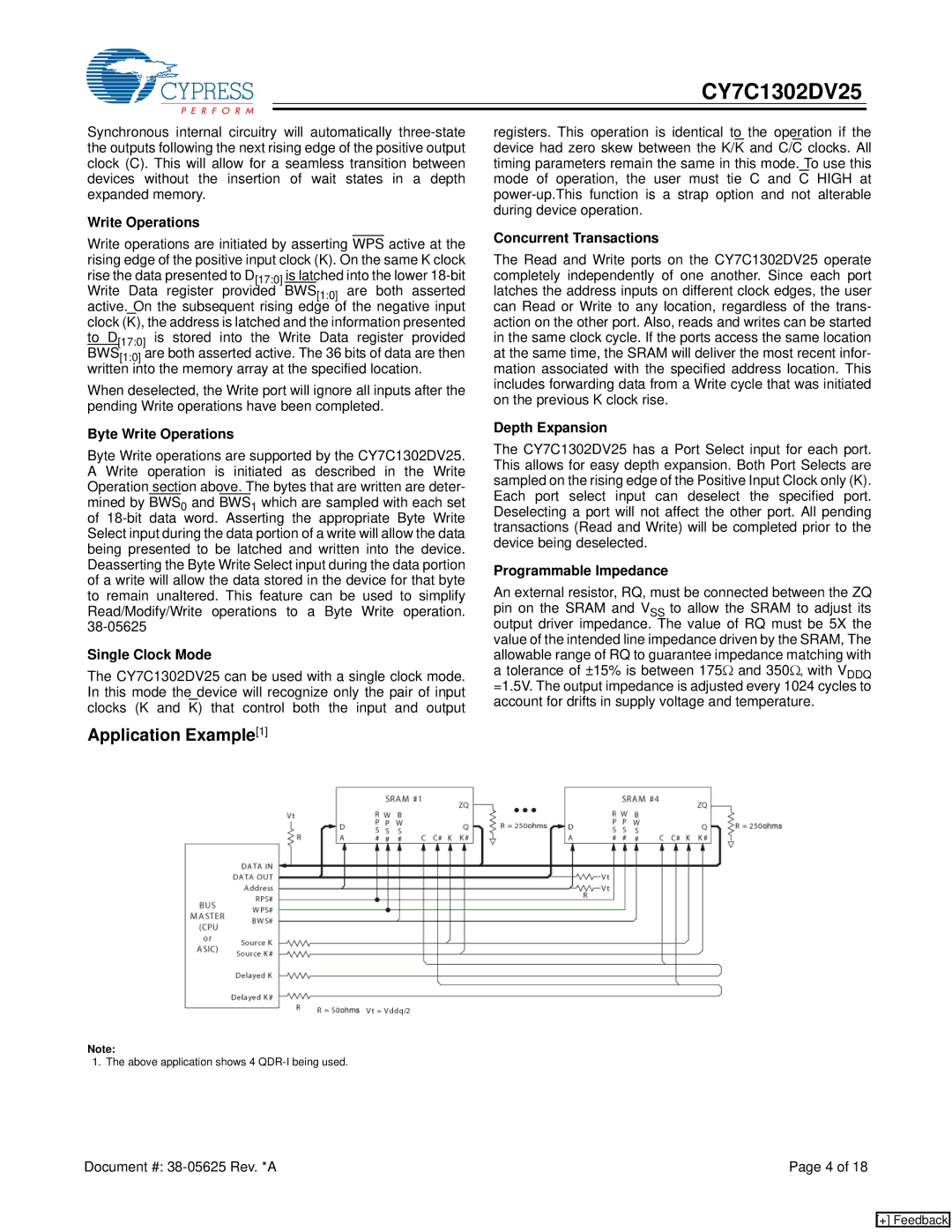CY7C1302DV25 specifications
The Cypress CY7C1302DV25 is a high-performance static random-access memory (SRAM) device designed to meet the demanding requirements of modern electronic systems. It operates with a supply voltage of 2.5V, making it ideal for battery-powered applications, while offering up to 1 Mbit of memory storage. This device is widely used in various applications, including telecommunications, networking, and industrial automation, due to its speed, reliability, and efficiency.One of the main features of the CY7C1302DV25 is its fast access time, which reaches as low as 10 nanoseconds. This rapid access allows for quicker data retrieval and processing, enhancing overall system performance. The device supports asynchronous read and write operations, providing flexibility in how data is managed and utilized within a system.
The CY7C1302DV25 has a rich set of functionalities that include word and byte write modes, allowing for efficient data manipulation. Its dual-port architecture enables simultaneous read and write operations, making it suitable for applications requiring high data throughput. This feature is particularly beneficial in systems where multiple devices need to access or update memory concurrently.
From a technological standpoint, the CY7C1302DV25 utilizes advanced CMOS technology, which not only contributes to its low power consumption but also enhances its durability and reliability. Lower power consumption is a crucial aspect for many applications, especially in portable devices, where battery life is a significant concern. The CY7C1302DV25 also incorporates built-in write protection, ensuring data integrity and security against unintentional writes during operation.
In terms of physical characteristics, the device comes in a compact 44-pin Thin Quad Flat No-lead (TQFN) package, making it suitable for space-constrained designs. Its small footprint allows for integration into densely packed circuit boards, providing manufacturers with flexibility in design.
Overall, the Cypress CY7C1302DV25 is a versatile and efficient SRAM solution that combines speed, low power consumption, and robust features, making it an excellent choice for a wide range of applications in the ever-evolving landscape of electronics. Its reliability and advanced specifications position it as a dependable memory solution for both current and future technologies.

